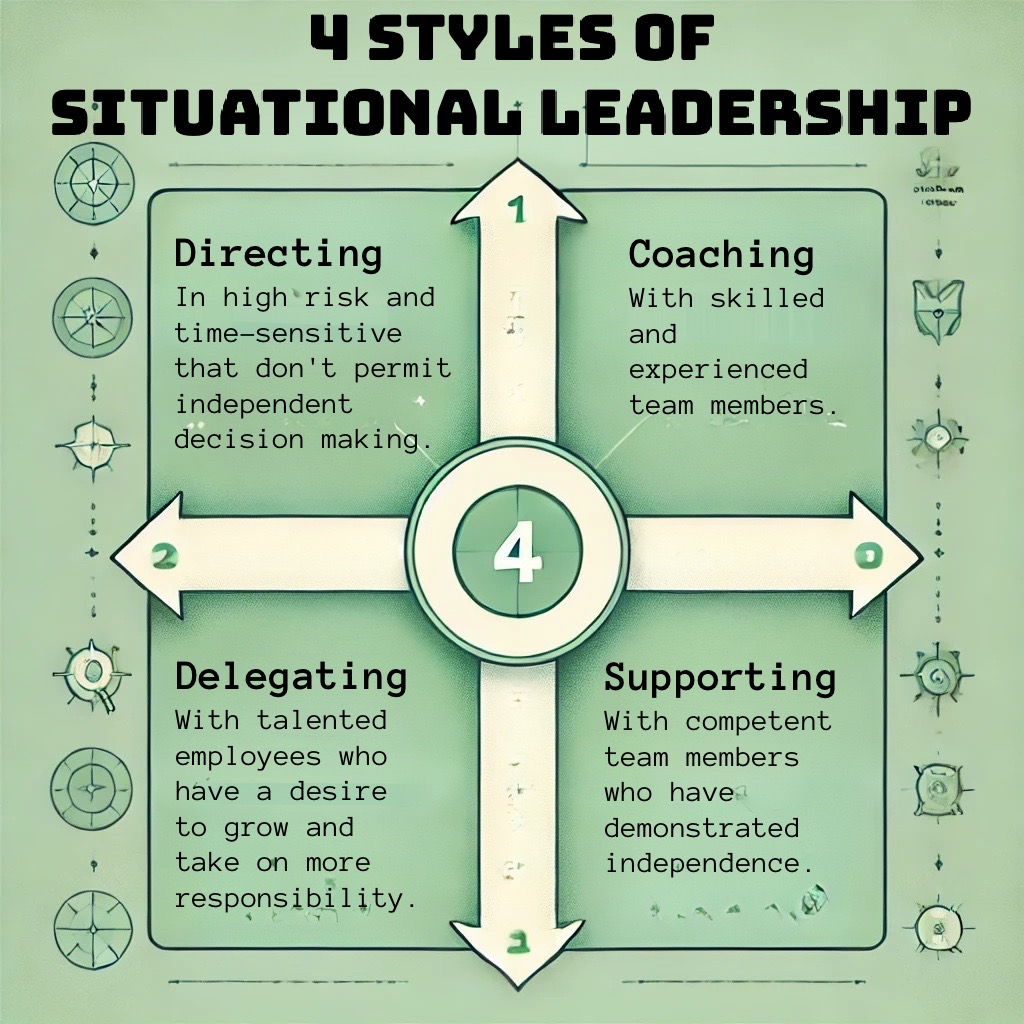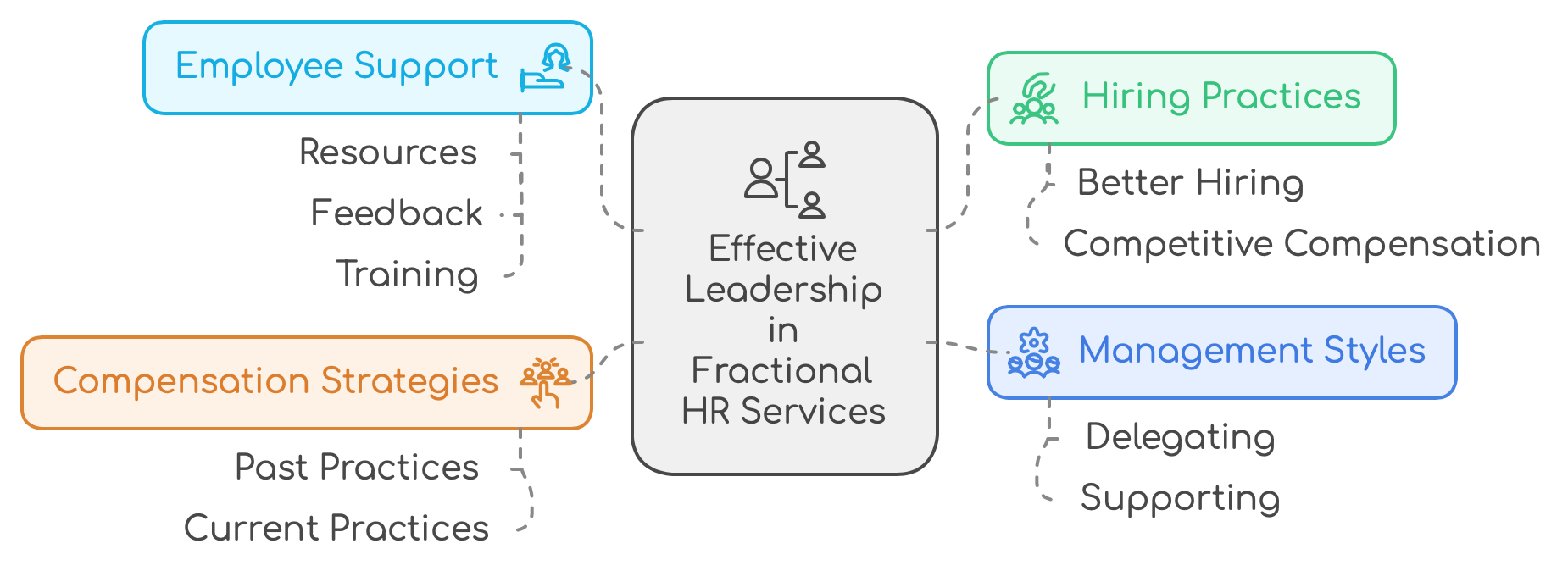Management Styles: How to Get Results Without Burning Out
Choosing the right management style can make all the difference when it comes to achieving success without burning out. But how do you select the appropriate style for different types of employees? What factors influence effectiveness in reaching the desired outcome? And most importantly, how can both leaders and their teams avoid burnout?
In this article, I’ll dive into these questions by examining management styles through the lens of the situational leadership model—a practical framework for fractional HR leaders, consultants, and fractional HR companies like UnitiQ, looking to balance performance with team well-being. I also recommend you to read: The Motivation Matrix: Exploring What Drives You and Your Team
In this article, I’ll dive into these questions by examining management styles through the lens of the situational leadership model—a practical framework for fractional HR leaders, consultants, and fractional HR companies like UnitiQ, looking to balance performance with team well-being. I also recommend you to read: The Motivation Matrix: Exploring What Drives You and Your Team
Situational Leadership: Adapting to Employee Needs
In the 1960s, Paul Hersey and Ken Blanchard introduced the concept of situational leadership in their book Management of Organizational Behavior. The model emphasizes that leadership effectiveness depends not only on the manager's preferences but also on the development level of the employee. However, I’d take it a step further—it's more about the nature of the relationship between the manager and the employee rather than just focusing on the employee’s development stage.
Situational leadership divides management styles into four quadrants, determined by the degree of support and direction the leader provides:
Situational leadership divides management styles into four quadrants, determined by the degree of support and direction the leader provides:
- Delegating (Quadrant D): This quadrant involves giving employees maximum freedom in how they approach their tasks. Leaders using this style trust their employees to take ownership, and it's highly effective for seasoned, reliable team members or external partners, such as those employed in fractional human resources services. Here, leaders delegate tasks and only step in when necessary. This style works well with experienced professionals like fractional HR consultants, where autonomy is expected.
- Supporting (Quadrant P): In this style, the leader provides emotional and practical support but limits direct guidance. Employees in this quadrant may need encouragement or extra resources—time, training, or multiple attempts—to solve problems. This is useful when working with employees or teams, like those in fractional HR services, who are eager but might lack confidence or immediate solutions. The leader offers a steady hand without micromanaging.
- Coaching (Quadrant N): This is a high-support, high-directive approach, often required when an employee needs to be guided "by the hand." This is common in technical training, such as learning to drive or following medical protocols. In business, it's less common since companies pay for results, not extensive mentoring. Yet, for those using fractional HR consulting, short-term coaching might be crucial when rapid skill-building is needed to achieve specific results.
- Directing (Quadrant I): This management style is high on direction but low on support. It's often used in environments where the task is clear, but the leader doesn’t have a vested interest in developing the employee's skills. Regulatory bodies often operate in this mode, laying out what needs to be done but leaving the execution to the individual. In fractional HR roles, this may apply when compliance or procedural tasks need to be managed tightly, but the leader isn't as focused on employee development.

Balancing Results and Burnout

In practice, business leaders using Hersey and Blanchard’s model can simplify their approach to focus on just two styles: delegating and supporting. The effectiveness of any management style is deeply linked to the hiring process. Better hiring leads to more effective management, where less hands-on control is needed. In cases where leaders don’t have the luxury of a strong hire, they may be forced into a more directive or coaching role, especially if the employee is unable or unwilling to take initiative.
For instance, in companies which use Fractional HR Services like UnitiQ, leaders often bring in specialists who are motivated and capable but might need additional support to align with company processes. When leaders can strike a balance—hiring well and managing effectively—they can step back and allow employees to take ownership.
When it comes to supporting employees who may not yet have all the answers but are willing to learn, a leader must provide guidance while ensuring the team has what it needs - resources, feedback, or training. This is crucial for fractional HR consulting scenarios where teams are brought in for specific expertise but need time to align with broader organizational goals.
A common practice in the past was lowering salaries during probation periods. This often led to lower-quality hires because few people are willing to join a company solely for training at a reduced rate. Therefore, in today's context, fractional HR leaders must provide competitive compensation to attract top talent and offer the right balance of support and delegation.
At the end of the day, there are two common management scenarios:
In established companies with clear processes, around 90% of operations run smoothly with 10% dedicated to flexibility. But for growing companies or those in the midst of change, this ratio flips—10% order and 90% chaos—requiring constant innovation and hypothesis testing.
For instance, in companies which use Fractional HR Services like UnitiQ, leaders often bring in specialists who are motivated and capable but might need additional support to align with company processes. When leaders can strike a balance—hiring well and managing effectively—they can step back and allow employees to take ownership.
When it comes to supporting employees who may not yet have all the answers but are willing to learn, a leader must provide guidance while ensuring the team has what it needs - resources, feedback, or training. This is crucial for fractional HR consulting scenarios where teams are brought in for specific expertise but need time to align with broader organizational goals.
A common practice in the past was lowering salaries during probation periods. This often led to lower-quality hires because few people are willing to join a company solely for training at a reduced rate. Therefore, in today's context, fractional HR leaders must provide competitive compensation to attract top talent and offer the right balance of support and delegation.
At the end of the day, there are two common management scenarios:
- When an employee knows how to do the job and is motivated to do it. In this case, the best approach is simply to step back and allow them the space to perform.
- When an employee wants to succeed but hasn’t yet figured out the best way to do so. In these cases, offering support without micromanaging will yield the best results.
In established companies with clear processes, around 90% of operations run smoothly with 10% dedicated to flexibility. But for growing companies or those in the midst of change, this ratio flips—10% order and 90% chaos—requiring constant innovation and hypothesis testing.
Final Thoughts
Leadership, as the academic Peter Kapitsa once said, is often about "not getting in the way of good people." This holds true especially in today’s world of fractional HR services where the right hires and proper support can mean the difference between success and burnout.
In my experience, the key takeaway is simple: great leadership is less about telling people what to do and more about creating the environment where good employees can thrive, whether you're running a traditional team or working within the flexible structure of fractional HR models. For companies like UnitiQ, knowing when to delegate, when to support, and how to strike the right balance will lead to long-term success and sustainable growth without burnout.
I recommend you to read related articles:
Mastering Delegation: 5 Rules to Empower Your Team and Avoid Common Mistakes
What Makes Managers Invaluable Assets in Organizations?
6 Key Use Cases Where Fractional HR Solutions Drive Business Growth
Why Businesses Rely on Interim Executives for Expertise, Stability, and Rapid Results
Implementing KPIs Without Losing Your Team’s Trust and Motivation
The Thinking Crisis in Organizations: Why We Don’t Think as We Should
In my experience, the key takeaway is simple: great leadership is less about telling people what to do and more about creating the environment where good employees can thrive, whether you're running a traditional team or working within the flexible structure of fractional HR models. For companies like UnitiQ, knowing when to delegate, when to support, and how to strike the right balance will lead to long-term success and sustainable growth without burnout.
I recommend you to read related articles:
Mastering Delegation: 5 Rules to Empower Your Team and Avoid Common Mistakes
What Makes Managers Invaluable Assets in Organizations?
6 Key Use Cases Where Fractional HR Solutions Drive Business Growth
Why Businesses Rely on Interim Executives for Expertise, Stability, and Rapid Results
Implementing KPIs Without Losing Your Team’s Trust and Motivation
The Thinking Crisis in Organizations: Why We Don’t Think as We Should
Reach out to UnitiQ today to learn more about how our flexible HR solutions can help your team succeed.
We are happy to help you with Talent Acquisition and HR tasks, please contact me, Olga Fedoseeva, Fonder at UnitiQ, directly:
My Telegram
My LinkedIn
We are happy to help you with Talent Acquisition and HR tasks, please contact me, Olga Fedoseeva, Fonder at UnitiQ, directly:
My Telegram
My LinkedIn








